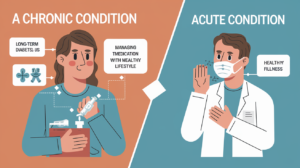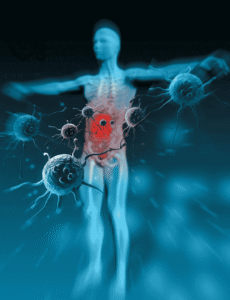What Are Chronic Tight Hamstrings?
Tight hamstrings are a common issue, but when the tightness becomes chronic, lasting for weeks or months—it can affect posture, mobility, and overall comfort. The hamstrings are the group of muscles at the back of your thigh, and they play a crucial role in walking, sitting, bending, and running. When these muscles stay tight over time, it can limit flexibility, cause discomfort, and even lead to back or knee problems.
Table of Contents
Common Symptoms of Chronic Tight Hamstrings
Stiffness or tightness in the back of the thigh
Difficulty bending forward or touching toes
Discomfort when walking or climbing stairs
Lower back pain, especially during movement
Feeling of tension even after stretching
What Causes Chronic Hamstring Tightness?
Several physical, postural, and lifestyle factors contribute to long-term hamstring tightness:
Sedentary Lifestyle: Prolonged sitting shortens the hamstrings and weakens glute muscles.
Poor Posture: Anterior pelvic tilt places constant strain on hamstrings.
Overtraining or Improper Exercise: Repeated strain from workouts without proper stretching or recovery.
Previous Injuries: Scar tissue or poor healing from hamstring strains or tears.
Muscle Imbalances: Weak core or glutes can make hamstrings overcompensate.
Neurological Tension: Nerve tightness or irritation can mimic muscular tightness.
Is It Really Hamstring Tightness or Something Else?
Sometimes what feels like muscle tightness is actually related to nerve tension (especially the sciatic nerve) or biomechanical imbalances. That’s why a thorough physical assessment by a qualified physiotherapist is essential before starting treatment.
Physiotherapy Treatments for Chronic Tight Hamstrings
Physiotherapy offers both short-term relief and long-term correction for tight hamstrings. Here’s a breakdown of what an effective physiotherapy plan may include:
1. Full Body Assessment
The first step is a full assessment. Your physiotherapist will check how you move, your posture, and any muscle imbalances. They may also test nerve tension to rule out issues like sciatica.
2. Hands-On Treatment (Manual Therapy)
This includes massage, myofascial release (stretching the fascia tissue), and trigger point therapy. These techniques help reduce tightness and improve blood flow to the hamstrings.
3. Nerve Mobilization (Neurodynamic Exercises)
Sometimes the nerves, not just the muscles, are tight. Physiotherapists use gentle nerve glides to stretch and loosen irritated nerves like the sciatic nerve.
4. Targeted Stretching Exercises
Instead of general stretching, they’ll guide you through specific hamstring stretches based on your body type. They may also include hip and calf stretches for better balance.
5. Strength Training
You’ll learn simple exercises to strengthen your glutes, hips, and core. These muscles support your hamstrings and prevent them from doing extra work, which causes tightness.
6. Posture and Movement Coaching
Physiotherapists teach you how to improve your sitting, standing, and walking habits. This can reduce the constant pull on your hamstrings. You might also get tips on your workspace setup.
7. Home Exercise Plan
They’ll give you easy stretches and exercises to do at home, so you keep improving between sessions. You’ll also learn what to avoid, like sitting too long without moving.
Can Tight Hamstrings Cause Other Issues?
Yes. Chronic hamstring tightness is often linked to:
Lower back pain
Knee discomfort
Poor athletic performance
Increased risk of hamstring strains
Postural imbalances
When to See a Physiotherapist
If your hamstring tightness has lasted more than 2–3 weeks and doesn’t improve with basic stretching, it’s time to consult a physiotherapist. Especially if:
You’ve had a previous hamstring injury
You feel pain, not just tightness
Your mobility is getting worse
Your lower back or knee is also affected
Final Thoughts
Tight hamstrings can be frustrating, especially when the tension doesn’t go away with simple stretches. But with the right help like professional physiotherapy—you can ease that tightness, move more freely, and feel better every day. Listen to your body, take early action, and don’t hesitate to reach out to a physiotherapist for a personalized plan that works for you.



